Trending
Opinion: How will Project 2025 impact game developers?
The Heritage Foundation's manifesto for the possible next administration could do great harm to many, including large portions of the game development community.
When observing people getting addicted to a game, sometimes continued for hours, I try to find a pattern behind the "addictive" mechanics.

I watch people playing games a lot. As a kid, I saw my parents struggling to find the exit of level 6-5 in Mario Bros. 3. After I entered the games industry, it was one of my tasks to note down how people react differently to our products. I also enjoy taking a quick look at how other gamers play my favorite games on Twitch or YouTube streaming.
When observing people getting addicted to a game, sometimes continued for hours, I try to find a pattern behind the "addictive" mechanics. So far I got 2 conclusions:
- Most of those games contains a part, that can be condensed into a "mini game"
- They provide a potential emotional experience that simulates a "slide"
The shape fitting toy
Its rule is very easy to understand: fitting the random pieces into the "holes" of the existing pile of pieces below. This reminds me of a toy I played before I could talk, which is called "The shape fitting toy" - the child needs to grab blocks with various shapes, and insert them into an empty box via holes which have the corresponding shapes:
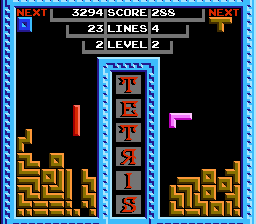
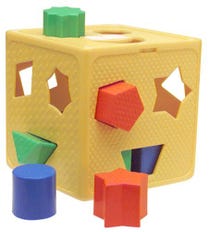
When a kid grabbed a piece of the toy, they need to find the correct "hole" and rotate the piece to the correct angle in order to put it into the container, which is almost the same as Tetris' gameplay. This toy is passed down for generations which proves why a game with similar mechanic could become popular. The key here is that the shapes have basic and distinctive geometries, just like 7 standard pieces of Tetris. I have played some "complex" version of Tetris which has pieces with more than 4 blocks - it was fun at the beginning, but as it progresses I find it unnecessarily complex and hard to organize, which made me stick to the original classic version.
The "Tetris"
"Tetra" means "four", so whenever player eliminate 4 lines at a time they got a "Tetris" bonus score - which is several times more than eliminating a single line. Anyone who has played this game for a while will realize this rule, and will try to accumulate the pieces with a vertical long gap at one side, until the long "stick" shaped piece appears, so that they could score more efficiently. I call this loop " slide", since all the steps building up the pile of pieces was like climbing up a slide, and the higher you climbed up, the more excited you are when you slide down.
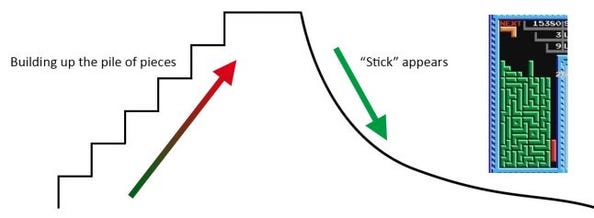
This kind of loop is very common in a lot of games, mostly represented in a straightforward way - think of all kinds of "Overdrive gauge" in many RPG and action games.
Tetris is a 28Kb 2D game, but the same applies to a AAA action game.
The "Tag" game
Most stealth games are about "avoiding line of sight", but Splinter Cell series did it to the extreme: the boundary between safe and danger is the outline of a shadow - as long as you stay in shadow, you're in a safe zone, and the system will tell you in a very direct way whether you're inside the darkness or not. This reminds me of the "Tag" game we played during junior school: The "ghost" chase after "human" who can only move by jumping with a single foot, however - if the "human" touches a tree, or a building, they're considered safe and can't be tagged. The "high" is while the "ghost" looks away and chasing other targets, and you anxiously jumping to another tree, hoping the ghost is too busy to look back for a while:


The key here is that both "safe zones" are clearly defined. When we were playing Tag as kids, we sometimes had the arguments about whether the "human" were jogging instead of jumping while moving around, but we rarely had problems about whether one is inside the "safe zone" or not - same as Conviction, as long as you're in darkness, the entire screen goes monochrome, and the guards won't see you even if you breathe right beside them. This is somehow "unrealistic", but just as understandable as the rules in the children's game.
Mark and execution
The system rewards you a "mark and execute" opportunity by performing a melee kill, to encourage a stealth play style. Just like "Tetris", it's very satisfying to lurk in the dark and plan your take down and mark carefully, since a lot of times, successfully execute 4 targets at a time can already clear a single room.

This is not a typical example about the theory I'm thinking about. It took me a long time to abstract the gameplay out of it, until again I came up with some old form of entertainment.
Five card draw
This is a very old and simple poker game. In fact I have one closer answer for it - Mahjong, but considering it's not very well known outside of Asia, I'm using this similar card game instead.
Unlike other stealth games, Hitman has shooting gameplay - but not so easy to handle and less fun to go this way. There're also action elements, but not as fast paced as most assassination games. Hitman is about improvisation, a big part of it is that player needs to constantly change their "identity" in order to approach their target, or perform important actions.
When playing "Five card draw", you usually have 5 random cards in your hand as a startup. Unless you're really lucky, the initial combination doesn't have a good chance to win big against other players. This is just like the standard suit 47, there's very limited area to explore and things to do. However as the game progresses, player will be provided chances to change the "cards" in their hand - namely the opportunities to change their outfit, or trigger an event. The memorable "accidental kills" or a "silent assassin" rated play through are like the high ranked poker hands, it takes multiple steps to achieve, it needs evaluation and proper decision making when opportunity arises, it's hard, but rewarding as well.
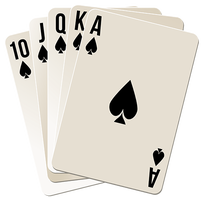
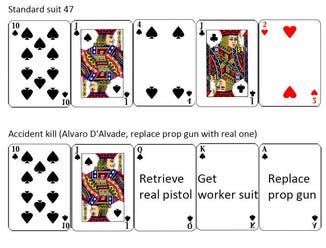
The Silent Assassin
Just like the protagonist himself, it requires a lot of self-discipline to be a qualified hitman. There're multiple ways to access a new "card", from the easiest "shoot one down", to the hardest "subdue" (sedative syringe in older games). The harder the process is, the longer it takes to plan and perform, and due to the NPCs' patrol routines it's much easier to be witnessed - namely it takes higher risk to do it in low violence:
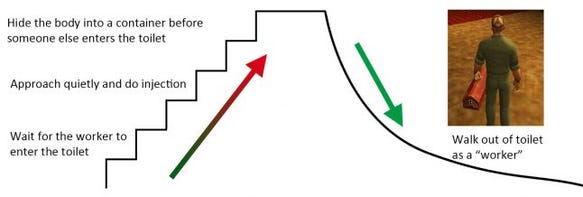
Conclusion:
Just like any physical addiction, games have their own chemical formula of its "nicotine". What the developers do, is to convey the fun, and help the players to experience it - just like how to help a first time smoker overcome the "coughing" and realize the "high".
Read more about:
BlogsYou May Also Like